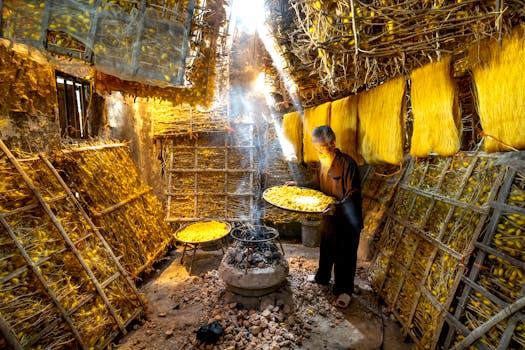Grassroots Growth: The Impact of Local Fiber Producers on Africa’s Economy

Grassroots Growth: The Impact of Local Fiber Producers on Africa’s Economy
Grassroots Growth: The Impact of Local Fiber Producers on Africa’s Economy is a crucial aspect of the continent’s development, as it has the potential to drive economic growth, create jobs, and improve living standards. The rise of local fiber producers in Africa is a testament to the continent’s growing economic prowess, as it transforms the way goods are produced, consumed, and distributed.
The African fiber industry has experienced significant growth in recent years, with many countries investing heavily in fiber production. This growth has been driven by increasing demand for fiber products, both domestically and internationally. Local fiber producers have taken advantage of this trend, establishing themselves as major players in the industry.
The Benefits of Local Fiber Production
Local fiber production has several benefits for Africa’s economy. Firstly, it creates jobs and stimulates economic growth. The fiber industry is labor-intensive, and the creation of jobs in this sector can have a significant impact on local economies. Additionally, local fiber production can help to reduce poverty and improve living standards, as it provides a source of income for many people.
Secondly, local fiber production can help to promote economic diversification. Many African countries have historically relied on a single commodity or industry for their economic growth. However, the rise of local fiber producers has created new opportunities for economic diversification, reducing the continent’s reliance on traditional industries.
Thirdly, local fiber production can help to improve food security. Fiber crops such as cotton, hemp, and flax are used to produce a range of products, including food, clothing, and textiles. By promoting local fiber production, African countries can improve their food security, reducing their reliance on imported goods.
Challenges Facing Local Fiber Producers
Despite the benefits of local fiber production, there are several challenges facing the industry. Firstly, many African countries lack the infrastructure and technology needed to support large-scale fiber production. This can make it difficult for local producers to compete with international companies, which often have greater resources and expertise.
Secondly, local fiber producers often face significant regulatory hurdles. Many African countries have complex and bureaucratic regulatory systems, which can make it difficult for local producers to operate. Additionally, the lack of standardization and quality control can make it challenging for local producers to access international markets.
Thirdly, local fiber producers often struggle to access finance and credit. Many African countries have underdeveloped financial systems, making it difficult for local producers to access the credit and financing they need to grow their businesses.
Conclusion
In conclusion, the impact of local fiber producers on Africa’s economy is significant. The rise of local fiber production has created new opportunities for economic growth, job creation, and poverty reduction. However, the industry also faces several challenges, including infrastructure and technology gaps, regulatory hurdles, and limited access to finance and credit.
Addressing these challenges will be crucial to the long-term success of the local fiber industry in Africa. Governments, international organizations, and private sector companies must work together to support local fiber producers, providing them with the resources and expertise they need to grow and thrive.
By promoting local fiber production, Africa can drive grassroots growth and development, creating a more prosperous and sustainable future for its citizens. The impact of local fiber producers on Africa’s economy is a testament to the continent’s growing economic prowess, and it has the potential to transform the way goods are produced, consumed, and distributed.



